What fertilizers are best to feed or irrigate corn?
To obtain high yields, fertilization of corn is required when growing it for any purpose: food, technical, fodder. The rate and timing of top dressing depends on many factors, but in the first place: climate, irrigation, soil structure and fertility.
About nutrients
Corn is a plant with a long growing season. Throughout it, it consumes a lot of nutrients from the soil. Practice shows that the yield at growing corn for grain and green mass directly depends on the timely introduction of mineral dressings. Corn has been cultivated for a long time and everywhere, in many countries it is called maize.
At different stages of development, the need for nutrition is different. During the period of panicle formation, the intensity of consumption increases. When growing modern hybrids, a yield of 1 t / ha is obtained with the introduction of the following minerals:

- nitrogen 24–32 kg;
- potassium 25–35 kg;
- phosphorus 10-14 kg;
- magnesium 6 kg;
- calcium 6 kg;
- boron 11 g;
- copper 14 g;
- sulfur 3 kg;
- manganese 110 g;
- zinc 85 g;
- molybdenum 0.9 g;
- iron 200 g
The application rate is calculated taking into account the content of the main nutrients (phosphorus, nitrogen, potassium) in the soil. Important periods for the consumption of basic nutrients are considered the period of time when 5–7 leaves are formed, and the second - during the growth of 9 and 10 leaves.
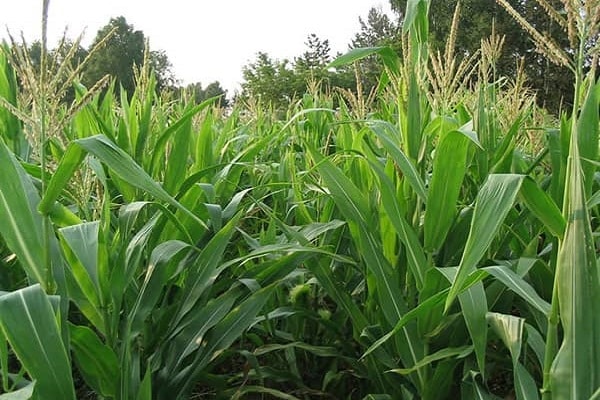
First period
During the first period, the laying of reproductive organs takes place in maize. The number and size of ears depend on the availability of food, phosphorus is especially needed at this time. At this point, the culture has a poorly developed root system, so it needs readily available forms of nutrients.
A great need for phosphorus occurs two weeks after the first shoots appear... It is needed for the development of the plant's root system. It is preferable to apply phosphorus fertilizers in the fall. Any form of nutrition is applied to light sandy soils in the spring.
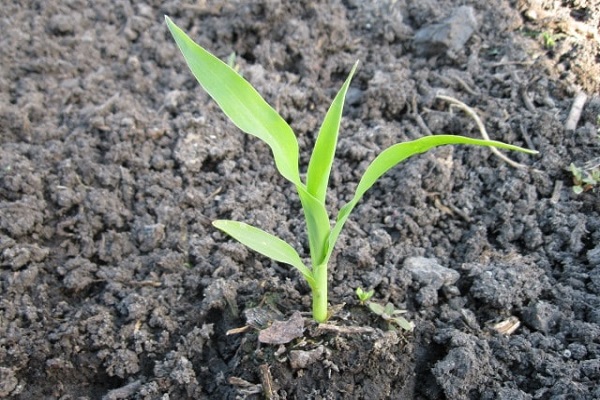
Second period
The duration of the second period is from 17 to 20 days. At this time, there is an intensive growth of the aboveground part of the corn, the accumulation of most of the green mass. It is at this time that corn needs nitrogen. Weak soil mineralization, leaching of nitrogen from the soil leads to its deficiency.
At this time, nitrogen mixtures are introduced. Potassium is necessary during the period of discarding panicles, forming flowers and cobs. On chernozem soils, zinc deficiency is noted. With its deficiency, the plant decreases the amount of tryptophan and protein. The beneficial effects of potassium:
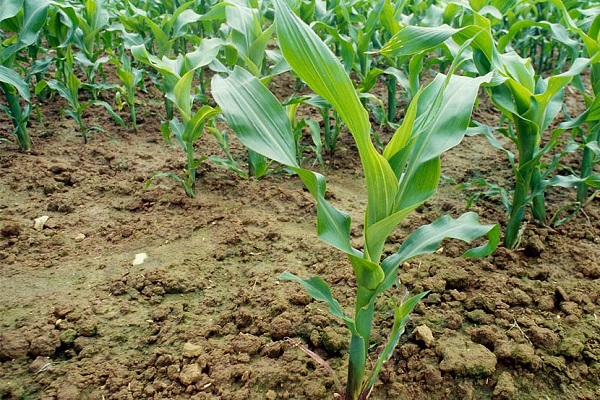
- facilitates the absorption of nitrogen;
- improves immunity;
- makes the plant resistant to drought;
- influences the formation of cobs.
Fertilizers
In different regions, the soils differ in structure, and hence the content of the main microelements. In the steppe black earth region, corn suffers from a lack of phosphorus and nitrogen. Pre-sowing application is not enough, they are quickly washed out of the soil and by the beginning of flowering they are not enough for the full development of plants.
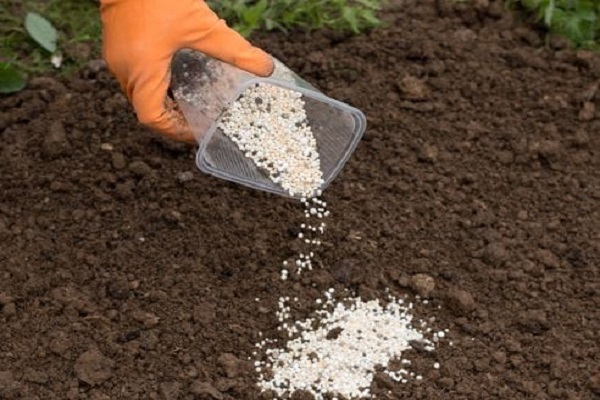
Throughout the season, you need to fertilize corn. They practice mineral and organic feeding. Organic food is a priority. The modern system of corn fertilization contains certain rates for the introduction of all types of nutrient mixtures. Today, the following proportions of organic matter are applied:
- chernozem lands - from 15 to 20 t / ha;
- sod-podzolic soils - from 20 to 35 t / ha;
- gray forest lands - from 20 to 35 tons / year.

The effect of fertilizers on the yield of the corn field is tangible. It is noted that the introduction of manure in the amount of 30 kg can increase the yield by 3-10 c / ha. Manure is used to prepare infusion, it is needed for watering corn. Insist on it from 3 to 5 days. You need to load 10 kg of mullein into the barrel and fill it with 50 liters of water.
After 5 days, the cooking process ends. Before use, the mullein infusion is diluted with water: 1 liter of water is added to 1 liter of concentrated liquid. There are disadvantages when using a ladybug:
- long thin stems;
- after watering, a crust forms on the soil.
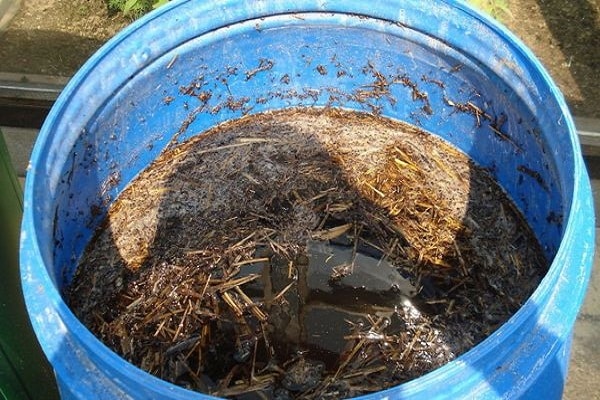
To eliminate these disadvantages, the application rate is adjusted depending on the soil composition. It is recommended to apply manure on loamy soils at a dose of 30-40 t / ha in autumn for plowing... In sandy soils, organic matter is introduced in the spring during cultivation.
The liquid manure contains the entire set of trace elements necessary for corn. Its application rate is 60–80 t / ha. When applying any form of organic fertilizer (liquid, solid), it is evenly distributed over the entire surface of the field with simultaneous incorporation into the ground.
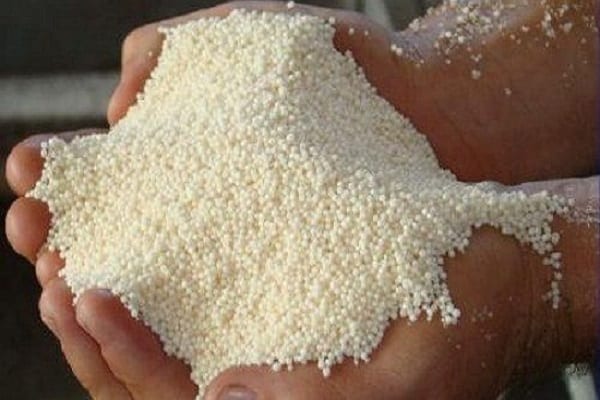
Mineral fertilizers
The use of mineral preparations has a positive effect on the yield, increases resistance to diseases and bad weather conditions.
Nitrogen
Ammonium nitrate is used as a nitrogen fertilizer. In spring, half of the norm (50%) is introduced for plowing, the second half of ammonium nitrate is used in the summer as a top dressing. For the first time, summer dressing is carried out in the phase of the first 5 leaves, the second - during the formation of cobs.
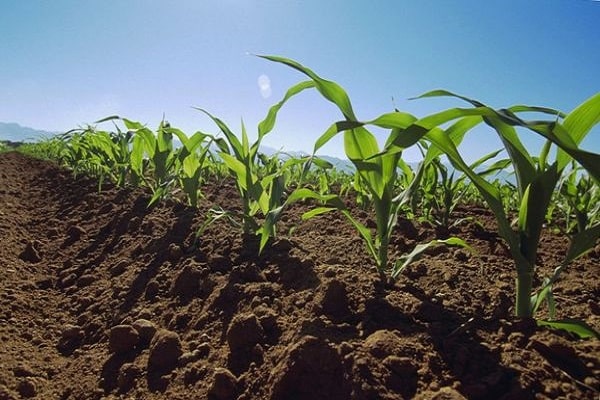
The lack of nitrogen is recognized by the color of the leaves. They become thin and lose color: they turn pale, turn yellow. The deficiency symptom eliminates ammonia well. In practice, farmers and summer residents use foliar feeding of corn: they use ammonia water for this purpose.
Violation of the norms of nitrogen application when fertilizing corn for silage has a negative effect on its quality:
- the percentage of nitrates in the grain increases;
- the percentage of dry matter decreases;
- cobs are formed.

Potash and phosphate fertilizers
These types of fertilizers are applied in the fall to clay soil, and in the spring to sandy soil. Phosphorus is introduced using special devices during sowing. Superphosphate is a classic phosphorus fertilizer that is applied to the soil. In addition to superphosphate, ammophos is widely used. The rate of application of these fertilizers to the soil is 8–12 kg / ha.
The high level of phosphorus in the soil has positive aspects:
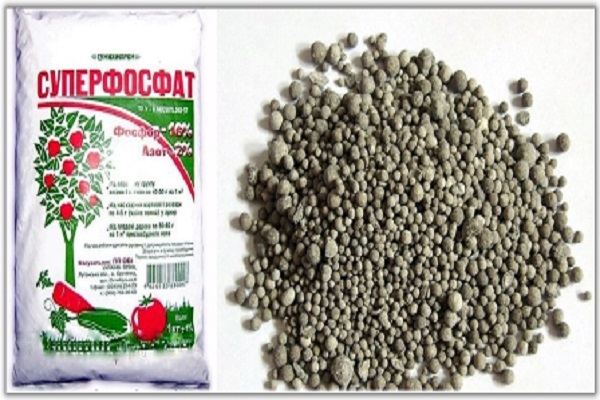
- improves the quality of the silage;
- improves cold resistance;
- accelerates the ripening of the cobs.
Young plants are more likely to suffer from a lack of potassium. They have small shoots covered with dark green leaves, slow growth and the lower surface of the leaves is colored purple.
In bad weather conditions (low average daily temperatures), potassium consumption in corn increases. Potash fertilization reduces cold weather stress and increases yields.In the cobs, thanks to potassium, the percentage of sugars and starch increases, and their taste improves.

Signs of a potash deficiency:
- wavy leaf edges;
- dark green color of the leaf plate;
- light-colored leaf tips that turn brown over time.
In the phase of 6–7 leaves, 0.5 kg / ha of potassium fertilizers (potassium salt) are applied under corn. Potassium chloride is introduced for autumn plowing.
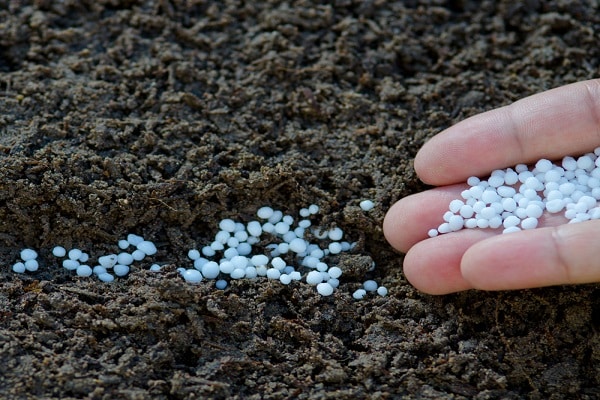
Fertilization methods
The entire technology of fertilizing corn is divided into three stages:
- the main one - fertilizer mixtures are introduced during soil preparation in the fall (spring);
- pre-sowing - nutrients are added during sowing;
- feeding - during the growing season.
The purpose of basic nutrition is to lay the foundation for nutritious corn nutrition. Fertilizers will be consumed as the plants grow. It is recommended to apply fertilizers to the soil in the absence of irrigation in the fall. Minerals introduced in spring give a more tangible increase in yield. Fertilizers must be embedded in the soil to a depth of 10 cm. At this depth, they are well absorbed by plants.
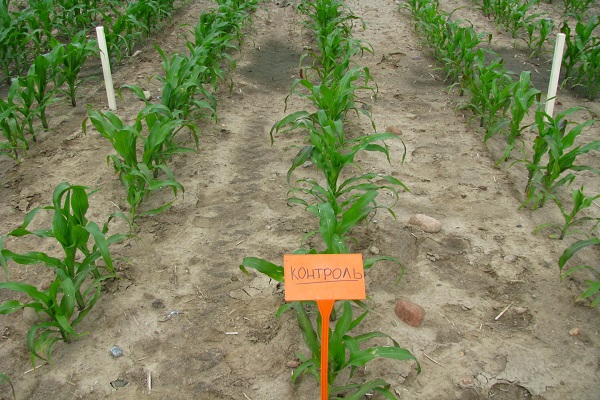
Among nitrogen fertilizers, preference is given to ammonium fertilizers:
- ammonium nitrate;
- ammonia anhydrous;
- ammonia water.
Phosphorus is supplied using phosphorus flour and superphosphate. The choice of potash fertilizers is wide. Preference should be given to fertilizers that do not contain chlorine: potassium sulfate, magnesia.
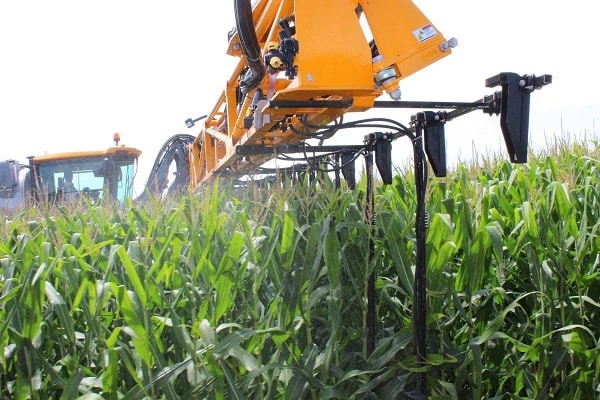
Pre-sowing application
Pre-sowing fertilization is carried out during sowing seeds into the soil. Small doses of superphosphate or ammophos are added. By introducing minerals into the aisles to a depth of 3 cm, high crop yields are achieved. Grain growth is noted by 3–3.5 c / ha.
Making dotted sowing, corn is fed with superphosphate granules. The yield increases by 4 c / ha with the additional introduction of small doses of potassium and nitrogen into the soil. The use of mineral dressings on fertile soils does not give such a tangible effect.
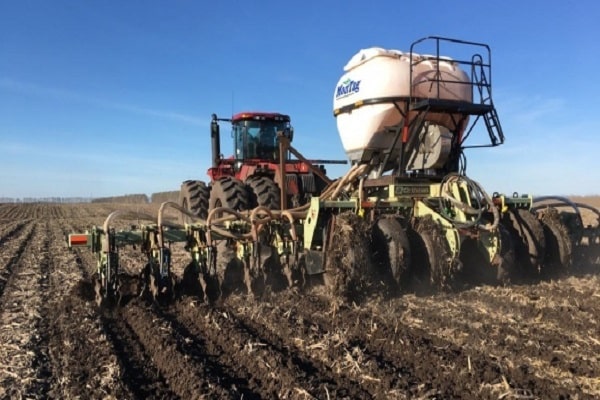
The effectiveness of complex fertilizers for corn has been proven in practice. In the spring, before sowing, nitrophoska, diamofoss, sulfoammophos are introduced. Many agricultural enterprises use corn for feeding liquid complex fertilizers... UAN is in demand - a carbamide-ammonia mixture. Liquid fertilizers are good because they can be applied to the soil using special equipment.
Summer feeding
On poor soils and in the absence of basic food, top dressing becomes the main suppliers of nutrients. Nitrogen and phosphorus are applied to a depth of 6–8 cm. For their better assimilation, the soil should contain a small amount of moisture. With the help of summer dressings, a yield increase of 3-5 c / ha is achieved.
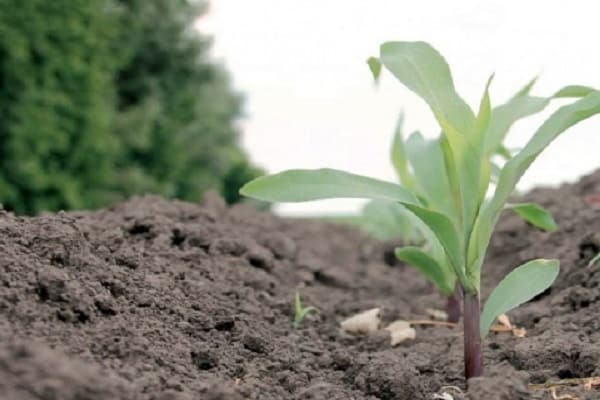
Top dressing by leaf
Leaf feeding is the fastest way to deliver nitrogen to the plant. Spraying on a leaf can be done if there are no symptoms of nitrogen deficiency. For the preparation of the fertilizer mixture, urea (urea) is used. Urea treatment is combined with pesticides. For foliar dressing, carbamide is considered the best.
The assimilation of amide nitrogen is 90–95%. The assimilation of nitrogen occurs in an extremely short time.
Weather requirements during work: calm, air temperature not lower than 20 ° C. Magnesium and sulfur are added to the fertilizer mixture with urea. They are well absorbed through corn leaves. The concentration of active substances in the solution should not exceed 5%.
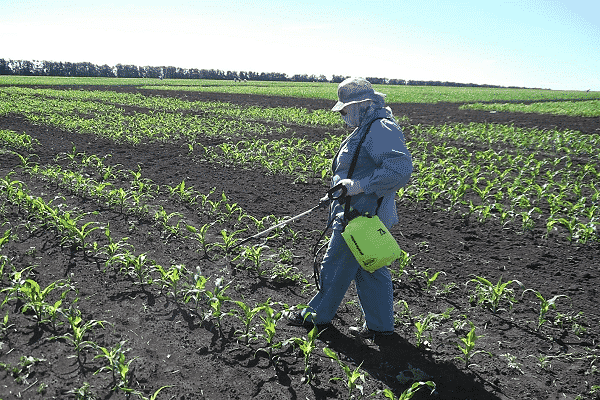
Higher doses can cause leaf burns. Up to 250 liters of solution are consumed per hectare. Foliar top dressing with fertilizers containing copper and zinc, if a low content of these minerals is found in the soil. The treatment is carried out in the phase of 6 leaves.
Conclusion
When growing corn, there is a need to use all types of fertilizers. The developed systems differ little when growing crops for grain or silage.A good result is achieved when using the optimal doses of fertilizers.

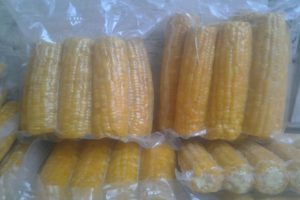


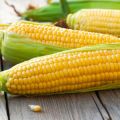
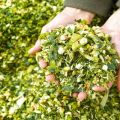
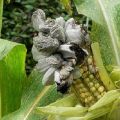
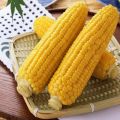

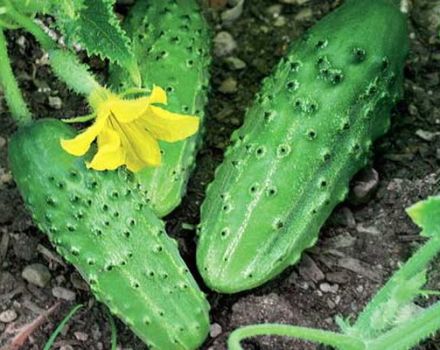
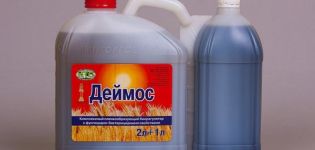
A bioactivator is well suited for corn.BioGrow”, It is not as aggressive as natural fertilizers, while it is much more effective. I have been using it for many years and have never let it down.